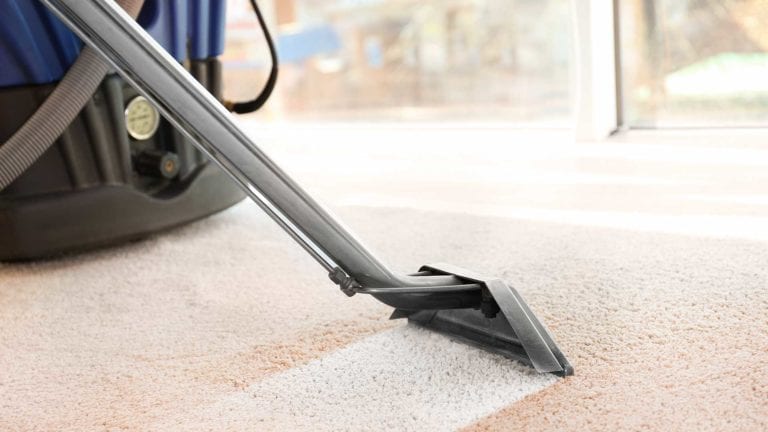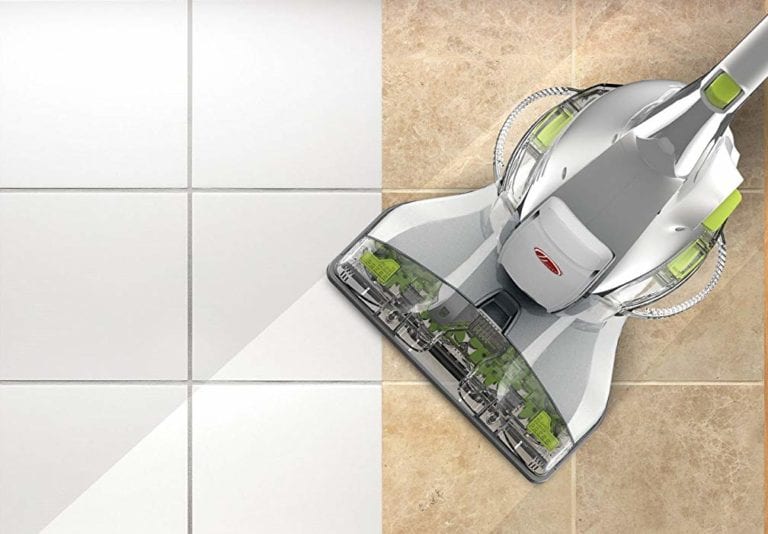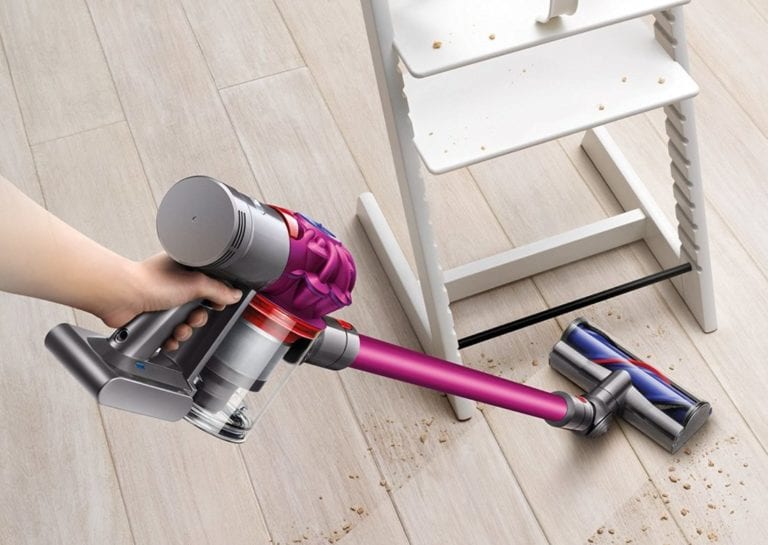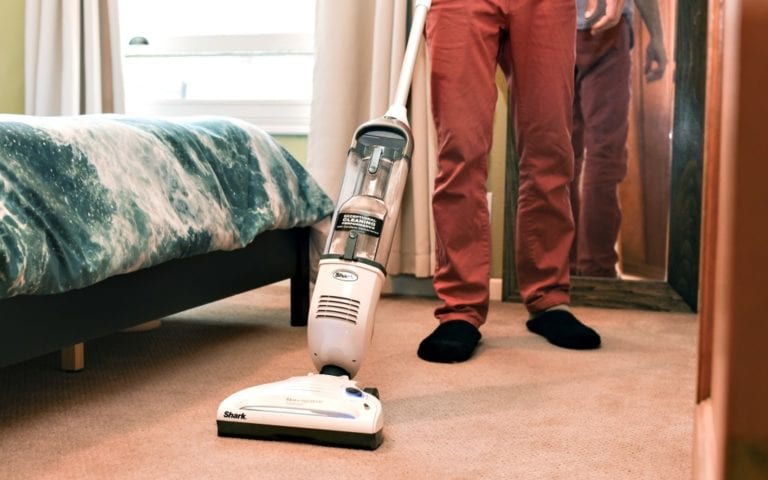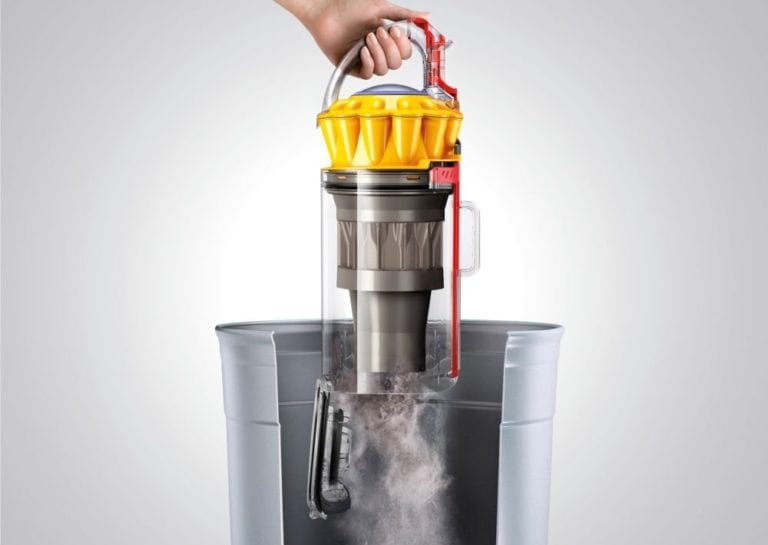How Does A Vacuum Cleaner Work?
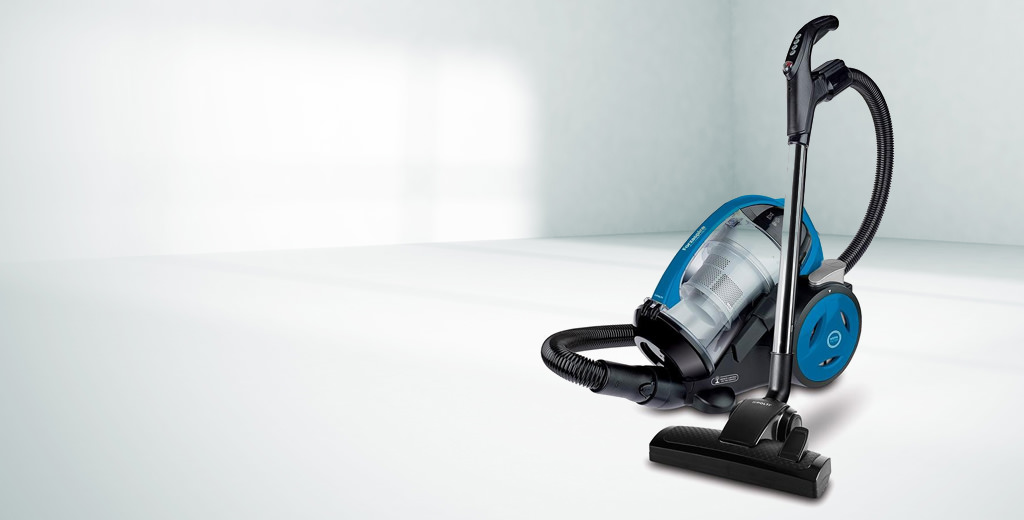
There are many devices that we use that make our lives easier—and vacuum cleaners are one of them. You may wonder how does a vacuum cleaner work? The purpose of this article is to answer that question so you know how a vacuum cleaner works. Also, there are many types of vacuum cleaners that work in different ways, we’ll get into that as well. But first…
Definition of a Vacuum Cleaner
Before answering the question of “how does a vacuum cleaner work?” it is useful to know about the basic concept of a vacuum cleaner first. The definition of a vacuum cleaner according to Merriam-Webster is, “A household appliance for cleaning floors, carpets, upholstery, etc. by suction”. A vacuum cleaner can be used on many different surfaces so that your living space is clean. Vacuum cleaners make it possible for you to clean up dust or any other small debris that you may not be able to see on many surfaces. Being able to suck up debris with a vacuum is something you may take for granted that can make your living space cleaner and improve the indoor air quality.
How Does a Vacuum Cleaner Work: The Components of a Vacuum
There are components in a vacuum just like any other devices that we use every day and knowing these components is important to understanding the question “how does a vacuum cleaner work?”. There are six basic components in a vacuum cleaner that work together and allow a vacuum to suck up debris from different surfaces.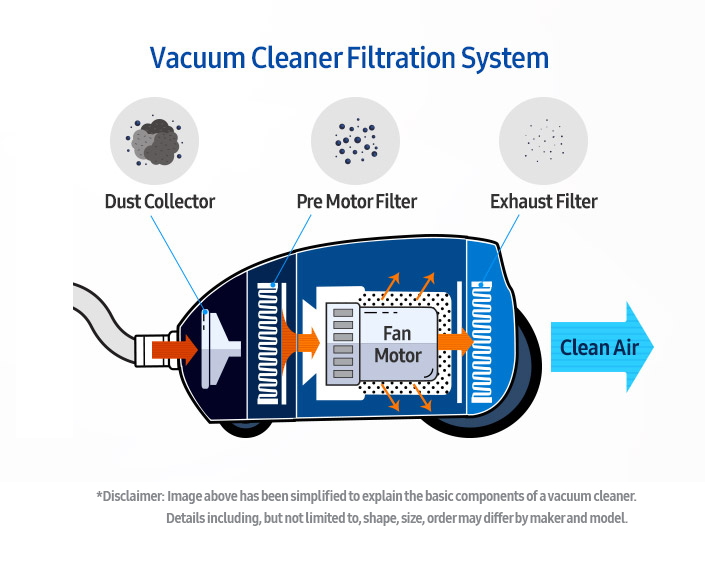
- Intake Port
- Exhaust Port
- Electric Motor
- A Fan
- A Porous Bag
- A Housing Container
According to Harris (n.d.), the intake port of a vacuum cleaner is the part where air and debris goes into the vacuum. This is also where cleaning accessories attach. This is a very important component because there would be no place for debris to go into a vacuum cleaner without it. The exhaust port is what allows the extra air to escape the vacuum cleaner so that pressure doesn’t build up. This is so that extra air that is sucked into a vacuum has somewhere to go, which is why the intake port is an important component.
The electric motor uses magnets to create attracting and repelling forces that cause motion or rotational motion. An electric motor is what allows the fans to move, so that the fan blades inside it can rotate and create suction for a vacuum. The fan blades turn in a circular motion and create the suction force that lets air go into a vacuum. Without the force produced by the fan, a vacuum would be unable pick up debris and would not be able to clean any surfaces.
A porous bag is where all the debris goes after it is sucked up by the vacuum. That way, it does not go back on the surface you are cleaning or go into the air. Finally, the housing container is the component “that contains all the other components” vacuum cleaners need (Harris, n.d.). The housing container is what holds all the components of a vacuum together and the components would have nowhere to go without it.
It is important to understand what happens when a vacuum cleaner is turned on, which will also help answer “how does a vacuum cleaner work?”. Electronic current that is created when you turn on a vacuum allows the motor to start working and the fan to start moving (Harris, n.d.). This is the first aspect of turning on a vacuum and it is important because the motor allows the fan to start working. A vacuum needs a source of power to get its motor working whether it’s with a battery or with an outlet. A vacuum cannot function without the motor and the fan would not work without the motor, so having a power source is vital.
Related Article: Lightweight Vacuum Cleaners
The fan is the next major function that occurs once the vacuum is turned on and the motor is working, which is what creates the suction force. The motor allows the fan blades to start turning so that they can create a force of air going into the exhaust port of a vacuum (Harris, n.d.). This process is what creates the suction force that picks up debris off of surfaces and pushes it through the exhaust port. A vacuum would be useless if it did not have this force, so it is vital for the fan blades to turn. This step is simple, but it is what makes vacuum cleaners capable of cleaning surfaces in your living space.
The next major step that occurs once you turn on a vacuum is the suction force and the air particles create density or air pressure. Air particles are pushed forward and air pressure “increases in front of the fan and decreases behind the fan” (Harris, n.d.). This is what makes the force of a vacuum cleaner powerful enough to pick up dirt on surfaces that you are trying to clean. The air and debris would not go into a vacuum and would not stay in it without this air pressure that is created. This may seem like another simple process, but it is important to a vacuum cleaner functioning properly.
There are a few more important details about the air pressure created by a vacuum that can help in answering the question “how does a vacuum cleaner work?”. The air pressure behind a fan is lower than the air pressure outside of the vacuum, which is called ambient air pressure and it is what creates the suction force (Harris, n.d.). It is important for a vacuum to create lower air pressure inside the vacuum so that the suction force can be created. The ambient air pressure goes into the intake port of a vacuum cleaner because of the lower pressure inside (Harris, n.d.). This is where the intake port contributes to the process of a vacuum working because it gives the air pressure a place to go.
A vacuum cleaner would be unable to work if the flow of air is cut off or interrupted in any way. The fan needs to keep moving and the path into the vacuum needs to stay clear, so that “there is a constant stream of air moving through the intake port and out the exhaust port” (Harris, n.d.). This means that if a fan is not working properly, you may need to replace the fan or get a new vacuum because there will be no suction force. Also, you have to make sure that the passageway into the vacuum remains clear, so you may need to clean it out. This is so that the air and whatever is sucked up from surfaces has a way to go into the vacuum.
Types of Vacuums and How They Work
There are many types of vacuums you can use that all have the same basic functionality and components, but each has a few differences.
- Bag Vacuums
- Bagless Vacuums
- Wet dry Vacuum
- Cyclonic Vacuum
- Automatic Vacuums
Bag Vacuum Cleaners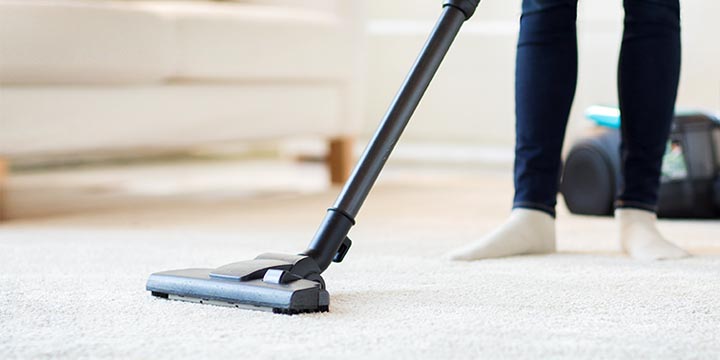
Vacuum cleaners with a bag are the first major type of vacuum and it is more basic in its function than the other types. According to Woodford (2017), vacuums with a bag work by using electricity from an outlet. The three basic components are a brush and suction head, a motor, and a bag. This seems simple enough and is similar to the basic concept of a vacuum cleaner that was discussed earlier. These types of vacuums usually need to remain plugged in to an electric outlet to function properly. Vacuums with a bag seem simple enough, but there is a little more to understand besides its three basic components.
There is a process that occurs when these types of vacuums are turned on that allows them to function. The electricity from the outlet allows the motor to work, which moves the rubber belt that “turns brushes and beaters on the roller” (Woodford, 2017). The fan sucks in the air and dirt, the air goes in the machine, the dirt goes into the bag, and the air exits out of the back (Woodford, 2017). This is a very basic process that allows vacuums with a bag to function so that they can pick up debris and put it into the bag. With these types of vacuums, the bags need to be cleaned out or replaced otherwise the dirt will have nowhere to go.
Related: Best Canister Vacuums
Bagless vacuum cleaners
There are also bagless vacuum cleaners that you can use, and they work a little bit differently than ones with a bag. These types of vacuums use a plastic bin instead of a bag where the dirt is separated from the air with a filter and it goes into the bin (Woodford, 2017). The bin that collects the debris needs to be emptied when it is full instead of needing to replace a bag, but the filter may need to be replaced. There is a hose that connects through the front of a bagless vacuum, which makes the airflow linear so that debris can go straight to the filter (Woodford, 2017). There are less areas on these types of vacuums that can have a blockage, which means the hose is the most important part that needs to remain clear.
Wet and dry vacuums
Wet and dry vacuums are another type of vacuum that you can use, and it works differently than other vacuums. These kinds of vacuums use, “a two-bucket system that separates the liquids from the solids into two different chambers” (Charles, 2018). This allows wet and dry vacuums to not only pick up dirt but to also pick up liquids such as water or juice. Liquids and dirt go through the tube where the airflow weakens over the buckets so that the debris and liquid fall out of the air stream (Charles, 2018). That is a simple process that allows this type of vacuum to pick up dirt and liquid that can make your living space dirty.
Cyclonic vacuums
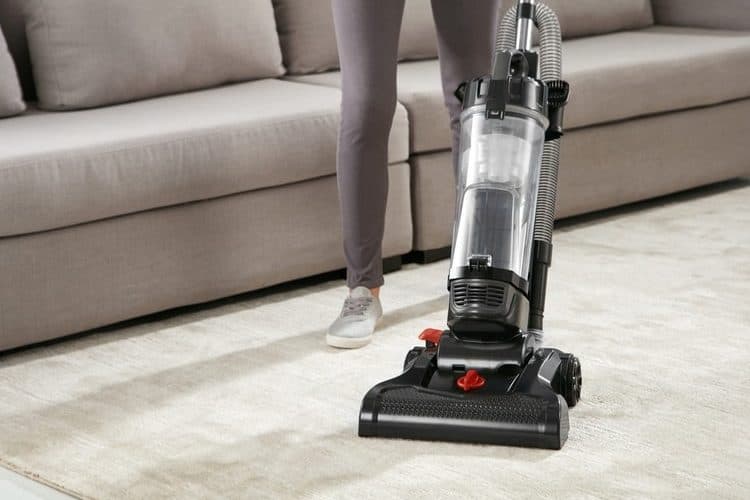
Cyclonic vacuums have a few different components including a brush bar by the air intake, a powerful electric motor, and a cyclone pointing down. These different parts make it possible for this type of vacuum to work, which is supposed to make the air exiting it cleaner. The process begins with air going into the brush bar and going up the cyclone with dirt falling to the bottom. The next step involves air going to a top section with multiple cyclones to remove smaller debris particles and then the air going through two filters on its way out (Woodford, 2017). The process for this type of vacuum is a little more complicated but it is supposed to prevent smaller particles from going back into the air.
Related: Best Commercial Vacuum Cleaner
Automatic vacuums
Automatic vacuums are a fairly newer type of vacuum that are meant to vacuum your living space automatically. These vacuums use a filter and bin but there are a few different components such as an infrared sensor, wheels, counter rotating brushes, and a battery that can be charged (Woodford, 2018). It works very similar to other vacuums with the debris going into it, through a filter, and into the dust bin. These vacuums use infrared sensors to sense objects that might be in its way and there are some that even map out your living space so that it can clean more efficiently (Woodford, 2018). These vacuums usually have a round shape and wheels that allow the machines to move around the floor of your living space.
Final thoughts on how does a vacuum work
Vacuum cleaners are an important cleaning tool that many people use. How a vacuum cleaner works is a fairly simple process once it is broken down. The process involves a suction force that takes in debris and puts them into a bag or bin. There are many different types of vacuums that all work similarly but with a few differences. Hopefully this article has taught you a bit more about a common household object you may have taken for granted before.

